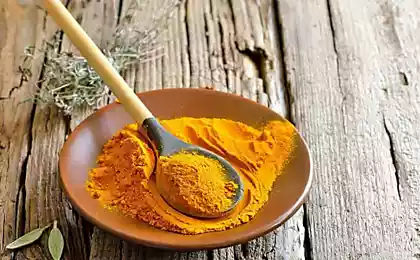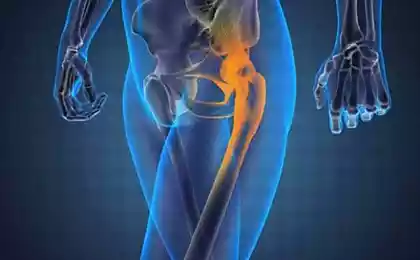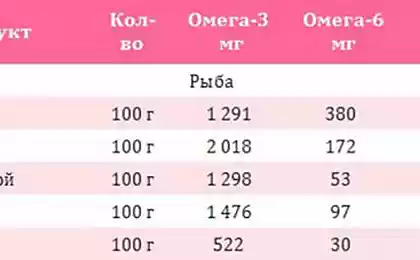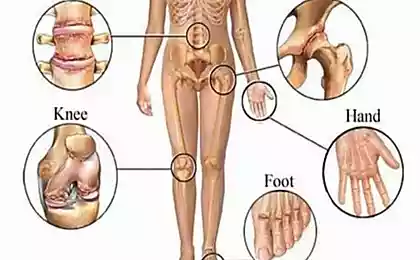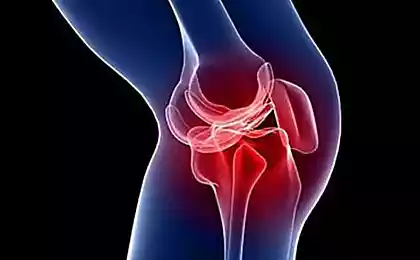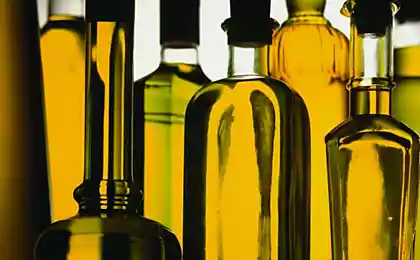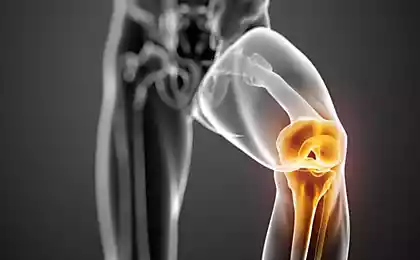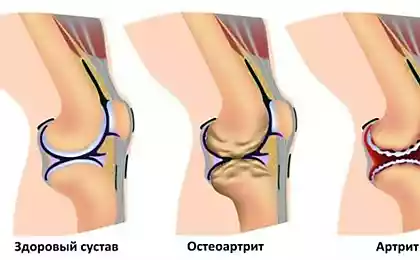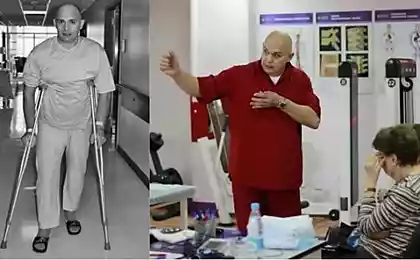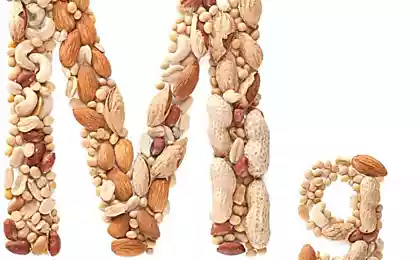510
Exercises for osteoarthritis of the hip joint
Osteoarthritis is a degenerative form of joint arthritis characterized by loss of joint cartilage tissue. In this disease, there is also an inflammatory component. Osteoarthritis is a common cause of disability among the elderly.
Although osteoarthritis affects, as a rule, the distal joints of the fingers and toes, it is common and osteoarthritis of the knee and hip jointsThe last of which is dedicated to this article.
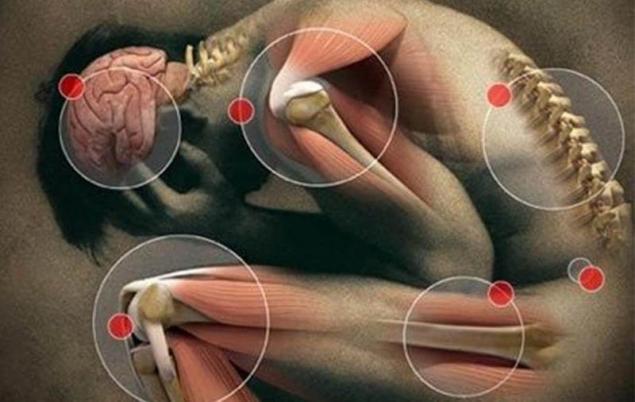
Contrary to popular belief, If you have osteoarthritis, exercise is absolutely essential for well-being..
Unfortunately, many of those with joint pain avoid exercise. According to previous studies, more than 40 percent of men and 56 percent of women with osteoarthritis do not get even 10 minutes of moderate or intense activity per week.
Less than 13 percent of men and less than 8 percent of women meet the recommendation to engage in moderate-intensity, low-impact physical activity for 150 minutes per week.
According to the lead researcher: “The fact that so many people with arthritis are passive should be a wake-up call for doctors.”. Indeed, if doctors instilled in their arthritis patients an understanding of the importance of exercise, many would benefit enormously.
Diet matters
It is important to pay attention to your diet – both for weight loss and to fight inflammation and promote bone and cartilage health.
Homemade bone broth is a wonderful food for arthritisBecause it contains a range of important nutrients for bones and joints, including minerals, collagen and cartilage components, silicon, glucosamine and chondroitin sulfate.
Two recent studies have confirmed that People who eat processed and fried foods, a lot of sugar and red meat are more likely to develop rheumatoid arthritis (autoimmune disorder) than those who eat a lot of fresh fruits, vegetables, legumes, poultry and fish.
A number of supplements, including turmeric, hyaluronic acid and astaxanthinThey may also be helpful in reducing the pain and inflammation associated with arthritis.
What are the benefits of exercise in arthritis?
The idea that physical exercise is harmful to the joints is mistaken; This belief has no basis whatsoever. It is a myth that exercise and/or normal activities “wear out” joints, such as the knee and hip.
On the contrary, the data indicate a positive effect of physical activity on the joint tissues. It is important to note that Exercise helps reduce joint pain and makes it easier to perform everyday tasks.
In addition, if you exercise enough to lose weight or maintain an ideal weight, you will reduce your risk of osteoarthritis in the first place.
People with obesity are twice as likely to have arthritis as those with normal weight because excess weight puts more pressure on the joints. This can not only lead to osteoarthritis, but also significantly aggravate the condition.
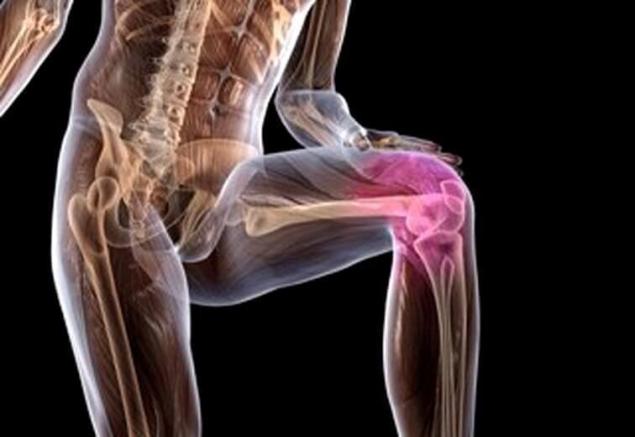
Exercises for osteoarthritis of the hip joint
Flexibility exercises for hip osteoarthritis Pulling up one knee Lying on your back, grab your right knee and pull it to your chest until you feel a stretch. Hold on for 20 seconds. Repeat on the left side. Pulling up two knees Lying on your back, grab both knees and pull them to your chest. Hold on for 20 seconds. "Cobra pose." Lie on the floor face down, hands parallel to the shoulders. Straighten your arms, tearing the upper body from the floor.
You should bend in the lower back, and the pelvis - to touch the floor.
Hold on for 20 seconds, then go down. Thigh bending with actuation Lying on your back, pull your knee to your chest.
Holding the knee with both hands, swing it from side to side for 20 seconds.
Repeat from the other side. External hip rotation Lying on your back, pull your right knee to your chest. Place your right hand on your knee and your left hand on your ankle.
Carefully pull your right ankle towards your head. Hold for 30 seconds and then repeat with your left leg. Internal thigh rotation Lying face down, bend your knees 90 degrees and lower your legs. Hold on for 30 seconds. Exercises for strengthening in osteoarthritis of the hip joint
Rakovina. Lie on your side, legs together, knees slightly bent. Raise your upper knee as much as you can and then lower it down.
Repeat 15 times, then move to the other side. Bridge Lying on your back, press your feet to the floor and raise your hips to the ceiling.
Stop for a few seconds and go down. Repeat five times. Knee rotation Lie on your side, legs together, knees slightly bent. Raise your upper knee and foot.
Keeping your knee up, rotate your foot up and down. Repeat 15 times and then move to the other side. Heel rotation Lie on your side, legs together, knees slightly bent. Raise your upper knee and foot.
Holding your foot motionless in the air, move your knee up and down.
Repeat 15 times and then move to the other side.Safe exercise for osteoarthritis
People with arthritis should be careful and avoid activities that exacerbate joint pain. Exercises that significantly stretch an unstable joint should be avoided. However, the exercise program should be as comprehensive as any other. Strength training, high-intensity cardio exercises, stretching and bodywork All this can be included in the training program, taking into account your physical fitness.
If you have knee osteoarthritis, Be sure to include exercises that strengthen the quadriceps muscle in the front of the thigh. And instead of running or other high-impact exercises, it’s best to pay attention to weight-free exercise, such as: swimming and cycling.
If after exercise the pain remains for an hour, Slow down or try other types of exercise. In addition, to reduce the pressure on the affected joints during training will help assistive devices. You may want to see a physiotherapist or a qualified personal trainer to help determine a safe range of workload for you.
Korean Medicine for Arthritis
As noted in the article by Dr. Seo Hyo-seoka, director of Pyunkang Korean Medicine Hospital, In Korean medicine, arthritis is associated with reduced kidney function:
If the kidneys are weak, then in cold weather the circulation of energy and blood weakens, so the residues of various substances are generated and accumulated in the joints. These remnants decompose over time and cause arthritis. To regenerate cartilage, you need to strengthen the health of the kidneys and lungs. . .
Modern medicine also recognizes a close connection between the kidneys and bones - it is found that erythropoietin (a hormone secreted by the kidneys, with a decrease in oxygen levels) signals the bone marrow to increase the production of red blood cells. In addition, the kidneys help regulate and absorb calcium, a key substance for bones.
When people are weakened, they need to strengthen the functions of the organ above. For the kidneys, accordingly, this organ is lungs, so it is possible to restore fundamental bone health, strengthening lung health.”
In oriental medicine, arthritis treatment involves maintaining good circulation and keeping the joints warm. Exercise copes with this task, but in oriental medicine methods such as: cauterization, bloodletting, acupuncture and herbal collections.
According to Dr. Seo Hyo-seoka, in six months of treatment with herbal preparations that purposefully cleanse the lungs, cartilage can be significantly restored. Returning the elasticity of cartilage, it will be possible to reverse even advanced arthritis.
Ozone and laser theparia
Dr. Robert Rowan, one of the leading ozone therapists in the U.S., has successfully treated many patients with the help of ozone therapy as an alternative to surgery.
If treatment with ozone does not help, it will not cause any harm and you can always have surgery later, but if the operation does not help, then the damage will be irreversible.
Another option worth considering is Cold treatment with an infrared laser He's also called K-laser). This is a relatively new type of therapy that accelerates wound healing by increasing tissue oxygenation and absorption of light photons by injured cells.
This special type of laser has a positive effect on muscles, ligaments and even bones, and the K-laser has the ability to penetrate deep into the body, allowing it to be used to treat problems such as knee and hip arthritis. It also stimulates mitochondria to produce more ATP and accelerate healing.
Useful supplements for pain and inflammation due to osteoarthritis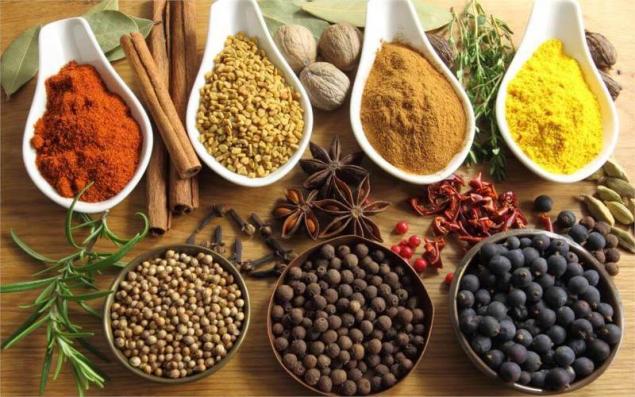
Turmeric/curcumin A study published in the Journal of Alternative and Complementary Medicine found that taking turmeric extract daily for six weeks relieves knee osteoarthritis pain as effectively as ibuprofen.
Apparently, this is due to the anti-inflammatory property of curcumin – the pigment that gives turmeric its yellow-orange color. Vitamin D Loss of cartilage — one of the main symptoms of osteoarthritis — is associated with low levels of vitamin D. So if you’re struggling with joint pain due to osteoarthritis, do a vitamin D test and then optimize it with appropriate sun exposure or a quality tanning bed. If you cannot take advantage of these options, consider taking oral supplements with vitamin D3 and vitamin K2. astaxanthin Astaxanthin is a powerful antioxidant and anti-inflammatory carotenoid. By reducing inflammation, astaxanthin helps prevent and treat a number of problems arising directly from inflammation, including rheumatoid arthritis (RA) and osteoarthritis.
One study found that after taking astaxanthin for eight weeks, RA sufferers experienced a 35 percent reduction in pain levels and a 40 percent improvement in their ability to perform daily activities.
Astaxanthin suppresses a number of inflammatory mediators, including tumor necrosis factor alpha, basic prostaglandin and basic interleukin, nitric oxide, COX-1 and COX-2 enzymes. Although it does not act as fast as NSAIDs, it does not have any dangerous side effects. Hyaluronic acid Hyaluronic acid is a key component of cartilage, it is responsible for moving nutrients into cells and removing waste. The second most important biological function is water retention, whereby cells that do not have direct blood flow (such as cartilage) are provided with nutrients and get rid of waste.
Unfortunately, the normal aging process reduces the amount of this acid synthesized by the body. Oral supplementation with hyaluronic acid will help to effectively soften the joints for two to four months.
Orthopedists may suggest introducing hyaluronic acid directly into the synovial spaces of arthritis-affected joints. Studies show that it helps increase cartilage biosynthesis. In addition, hyaluronic acid has anti-inflammatory and analgesic (analgesic) properties. Eggshell membrane The egg shell membrane is a unique protective barrier between the egg protein and the mineralized egg shell. The membrane contains elastin (a protein that supports cartilage health) and collagen (a fibrous protein that maintains the strength and elasticity of cartilage and connective tissue).
It also contains transformative growth factor-β (a protein that supports tissue rejuvenation), as well as other amino acids and structural components that support joint stability and flexibility, providing them with the building blocks needed to form cartilage.
An inexpensive way to get these nutrients is to grind the shell with a coffee grinder and add the powder to smoothies. I recommend using only organic eggs from grazing poultry. boswellia Also known as "boswellin" or "Indian frankincense," this Indian herb is, in my opinion, particularly beneficial for inflammation in arthritis and associated pain. With continuous use, boswellia will help maintain a constant flow of blood to the joints, supporting the ability of joint tissues to increase flexibility and strength. Omega-3 fats of animal origin They are great for arthritis because omega-3s are well known for their ability to reduce inflammation. Try to find a high-quality source of animal fats, such as krill oil. Baths with sulfur / English salt / MSM In addition to ensuring that your diet has enough sulfur-rich foods, such as organic and/or pastured beef and poultry, Stephanie Seneff, a senior researcher at MIT, recommends taking a bath with magnesium sulfate (English salt) to make up for sulfur deficiency.
She uses about 1/4 cup for a bath of water, twice a week. This is especially helpful if you have joint problems or arthritis. Methylsulfonylmethane (known as MSM) is another useful alternative. MSM is an organic form of sulfur and a powerful antioxidant that is present in many plants. It's also sold in supplement form. published
Dr. Joseph Mercola Materials are informative. Remember, self-medication is life-threatening, for advice on the use of any drugs and treatment methods, consult a doctor. P.S. And remember, just changing our consumption – together we change the world!
Source: russian.mercola.com/sites/articles/archive/2016/11/09/%D1%82%D0%B0%D0%D0%B0%D0%B0%D0%B0%D0%B5%D0%D1%80%D0%B5%D0%D0%BD%D0%D0%BD%D0%BE%D0%D0%BE-%D1%81%D1%D1%83%D1%82%D0%B0%D0%D0%B0%D0%D0%B0.aspx
Although osteoarthritis affects, as a rule, the distal joints of the fingers and toes, it is common and osteoarthritis of the knee and hip jointsThe last of which is dedicated to this article.

Contrary to popular belief, If you have osteoarthritis, exercise is absolutely essential for well-being..
Unfortunately, many of those with joint pain avoid exercise. According to previous studies, more than 40 percent of men and 56 percent of women with osteoarthritis do not get even 10 minutes of moderate or intense activity per week.
Less than 13 percent of men and less than 8 percent of women meet the recommendation to engage in moderate-intensity, low-impact physical activity for 150 minutes per week.
According to the lead researcher: “The fact that so many people with arthritis are passive should be a wake-up call for doctors.”. Indeed, if doctors instilled in their arthritis patients an understanding of the importance of exercise, many would benefit enormously.
Diet matters
It is important to pay attention to your diet – both for weight loss and to fight inflammation and promote bone and cartilage health.
Homemade bone broth is a wonderful food for arthritisBecause it contains a range of important nutrients for bones and joints, including minerals, collagen and cartilage components, silicon, glucosamine and chondroitin sulfate.
Two recent studies have confirmed that People who eat processed and fried foods, a lot of sugar and red meat are more likely to develop rheumatoid arthritis (autoimmune disorder) than those who eat a lot of fresh fruits, vegetables, legumes, poultry and fish.
A number of supplements, including turmeric, hyaluronic acid and astaxanthinThey may also be helpful in reducing the pain and inflammation associated with arthritis.
What are the benefits of exercise in arthritis?
The idea that physical exercise is harmful to the joints is mistaken; This belief has no basis whatsoever. It is a myth that exercise and/or normal activities “wear out” joints, such as the knee and hip.
On the contrary, the data indicate a positive effect of physical activity on the joint tissues. It is important to note that Exercise helps reduce joint pain and makes it easier to perform everyday tasks.
In addition, if you exercise enough to lose weight or maintain an ideal weight, you will reduce your risk of osteoarthritis in the first place.
People with obesity are twice as likely to have arthritis as those with normal weight because excess weight puts more pressure on the joints. This can not only lead to osteoarthritis, but also significantly aggravate the condition.

Exercises for osteoarthritis of the hip joint
Flexibility exercises for hip osteoarthritis Pulling up one knee Lying on your back, grab your right knee and pull it to your chest until you feel a stretch. Hold on for 20 seconds. Repeat on the left side. Pulling up two knees Lying on your back, grab both knees and pull them to your chest. Hold on for 20 seconds. "Cobra pose." Lie on the floor face down, hands parallel to the shoulders. Straighten your arms, tearing the upper body from the floor.
You should bend in the lower back, and the pelvis - to touch the floor.
Hold on for 20 seconds, then go down. Thigh bending with actuation Lying on your back, pull your knee to your chest.
Holding the knee with both hands, swing it from side to side for 20 seconds.
Repeat from the other side. External hip rotation Lying on your back, pull your right knee to your chest. Place your right hand on your knee and your left hand on your ankle.
Carefully pull your right ankle towards your head. Hold for 30 seconds and then repeat with your left leg. Internal thigh rotation Lying face down, bend your knees 90 degrees and lower your legs. Hold on for 30 seconds. Exercises for strengthening in osteoarthritis of the hip joint
Rakovina. Lie on your side, legs together, knees slightly bent. Raise your upper knee as much as you can and then lower it down.
Repeat 15 times, then move to the other side. Bridge Lying on your back, press your feet to the floor and raise your hips to the ceiling.
Stop for a few seconds and go down. Repeat five times. Knee rotation Lie on your side, legs together, knees slightly bent. Raise your upper knee and foot.
Keeping your knee up, rotate your foot up and down. Repeat 15 times and then move to the other side. Heel rotation Lie on your side, legs together, knees slightly bent. Raise your upper knee and foot.
Holding your foot motionless in the air, move your knee up and down.
Repeat 15 times and then move to the other side.Safe exercise for osteoarthritis
People with arthritis should be careful and avoid activities that exacerbate joint pain. Exercises that significantly stretch an unstable joint should be avoided. However, the exercise program should be as comprehensive as any other. Strength training, high-intensity cardio exercises, stretching and bodywork All this can be included in the training program, taking into account your physical fitness.
If you have knee osteoarthritis, Be sure to include exercises that strengthen the quadriceps muscle in the front of the thigh. And instead of running or other high-impact exercises, it’s best to pay attention to weight-free exercise, such as: swimming and cycling.
If after exercise the pain remains for an hour, Slow down or try other types of exercise. In addition, to reduce the pressure on the affected joints during training will help assistive devices. You may want to see a physiotherapist or a qualified personal trainer to help determine a safe range of workload for you.
Korean Medicine for Arthritis
As noted in the article by Dr. Seo Hyo-seoka, director of Pyunkang Korean Medicine Hospital, In Korean medicine, arthritis is associated with reduced kidney function:
If the kidneys are weak, then in cold weather the circulation of energy and blood weakens, so the residues of various substances are generated and accumulated in the joints. These remnants decompose over time and cause arthritis. To regenerate cartilage, you need to strengthen the health of the kidneys and lungs. . .
Modern medicine also recognizes a close connection between the kidneys and bones - it is found that erythropoietin (a hormone secreted by the kidneys, with a decrease in oxygen levels) signals the bone marrow to increase the production of red blood cells. In addition, the kidneys help regulate and absorb calcium, a key substance for bones.
When people are weakened, they need to strengthen the functions of the organ above. For the kidneys, accordingly, this organ is lungs, so it is possible to restore fundamental bone health, strengthening lung health.”
In oriental medicine, arthritis treatment involves maintaining good circulation and keeping the joints warm. Exercise copes with this task, but in oriental medicine methods such as: cauterization, bloodletting, acupuncture and herbal collections.
According to Dr. Seo Hyo-seoka, in six months of treatment with herbal preparations that purposefully cleanse the lungs, cartilage can be significantly restored. Returning the elasticity of cartilage, it will be possible to reverse even advanced arthritis.
Ozone and laser theparia
Dr. Robert Rowan, one of the leading ozone therapists in the U.S., has successfully treated many patients with the help of ozone therapy as an alternative to surgery.
If treatment with ozone does not help, it will not cause any harm and you can always have surgery later, but if the operation does not help, then the damage will be irreversible.
Another option worth considering is Cold treatment with an infrared laser He's also called K-laser). This is a relatively new type of therapy that accelerates wound healing by increasing tissue oxygenation and absorption of light photons by injured cells.
This special type of laser has a positive effect on muscles, ligaments and even bones, and the K-laser has the ability to penetrate deep into the body, allowing it to be used to treat problems such as knee and hip arthritis. It also stimulates mitochondria to produce more ATP and accelerate healing.
Useful supplements for pain and inflammation due to osteoarthritis

Turmeric/curcumin A study published in the Journal of Alternative and Complementary Medicine found that taking turmeric extract daily for six weeks relieves knee osteoarthritis pain as effectively as ibuprofen.
Apparently, this is due to the anti-inflammatory property of curcumin – the pigment that gives turmeric its yellow-orange color. Vitamin D Loss of cartilage — one of the main symptoms of osteoarthritis — is associated with low levels of vitamin D. So if you’re struggling with joint pain due to osteoarthritis, do a vitamin D test and then optimize it with appropriate sun exposure or a quality tanning bed. If you cannot take advantage of these options, consider taking oral supplements with vitamin D3 and vitamin K2. astaxanthin Astaxanthin is a powerful antioxidant and anti-inflammatory carotenoid. By reducing inflammation, astaxanthin helps prevent and treat a number of problems arising directly from inflammation, including rheumatoid arthritis (RA) and osteoarthritis.
One study found that after taking astaxanthin for eight weeks, RA sufferers experienced a 35 percent reduction in pain levels and a 40 percent improvement in their ability to perform daily activities.
Astaxanthin suppresses a number of inflammatory mediators, including tumor necrosis factor alpha, basic prostaglandin and basic interleukin, nitric oxide, COX-1 and COX-2 enzymes. Although it does not act as fast as NSAIDs, it does not have any dangerous side effects. Hyaluronic acid Hyaluronic acid is a key component of cartilage, it is responsible for moving nutrients into cells and removing waste. The second most important biological function is water retention, whereby cells that do not have direct blood flow (such as cartilage) are provided with nutrients and get rid of waste.
Unfortunately, the normal aging process reduces the amount of this acid synthesized by the body. Oral supplementation with hyaluronic acid will help to effectively soften the joints for two to four months.
Orthopedists may suggest introducing hyaluronic acid directly into the synovial spaces of arthritis-affected joints. Studies show that it helps increase cartilage biosynthesis. In addition, hyaluronic acid has anti-inflammatory and analgesic (analgesic) properties. Eggshell membrane The egg shell membrane is a unique protective barrier between the egg protein and the mineralized egg shell. The membrane contains elastin (a protein that supports cartilage health) and collagen (a fibrous protein that maintains the strength and elasticity of cartilage and connective tissue).
It also contains transformative growth factor-β (a protein that supports tissue rejuvenation), as well as other amino acids and structural components that support joint stability and flexibility, providing them with the building blocks needed to form cartilage.
An inexpensive way to get these nutrients is to grind the shell with a coffee grinder and add the powder to smoothies. I recommend using only organic eggs from grazing poultry. boswellia Also known as "boswellin" or "Indian frankincense," this Indian herb is, in my opinion, particularly beneficial for inflammation in arthritis and associated pain. With continuous use, boswellia will help maintain a constant flow of blood to the joints, supporting the ability of joint tissues to increase flexibility and strength. Omega-3 fats of animal origin They are great for arthritis because omega-3s are well known for their ability to reduce inflammation. Try to find a high-quality source of animal fats, such as krill oil. Baths with sulfur / English salt / MSM In addition to ensuring that your diet has enough sulfur-rich foods, such as organic and/or pastured beef and poultry, Stephanie Seneff, a senior researcher at MIT, recommends taking a bath with magnesium sulfate (English salt) to make up for sulfur deficiency.
She uses about 1/4 cup for a bath of water, twice a week. This is especially helpful if you have joint problems or arthritis. Methylsulfonylmethane (known as MSM) is another useful alternative. MSM is an organic form of sulfur and a powerful antioxidant that is present in many plants. It's also sold in supplement form. published
Dr. Joseph Mercola Materials are informative. Remember, self-medication is life-threatening, for advice on the use of any drugs and treatment methods, consult a doctor. P.S. And remember, just changing our consumption – together we change the world!
Source: russian.mercola.com/sites/articles/archive/2016/11/09/%D1%82%D0%B0%D0%D0%B0%D0%B0%D0%B0%D0%B5%D0%D1%80%D0%B5%D0%D0%BD%D0%D0%BD%D0%BE%D0%D0%BE-%D1%81%D1%D1%83%D1%82%D0%B0%D0%D0%B0%D0%D0%B0.aspx
These 3 drinks I stabilize his blood sugar levels and normalize digestion
Walk with your child: clean or happy

